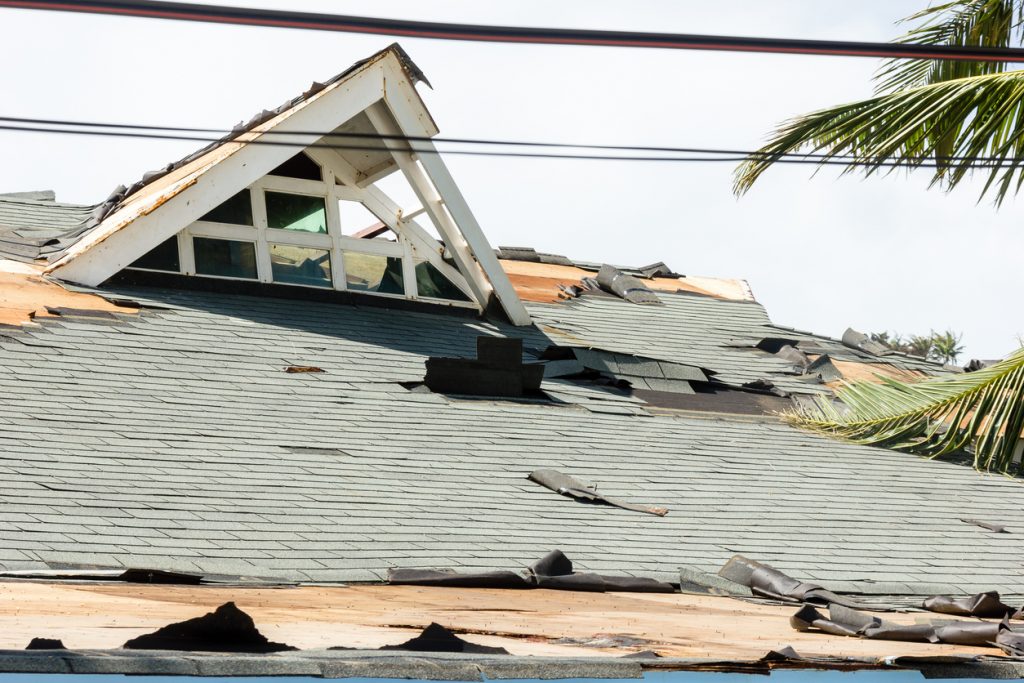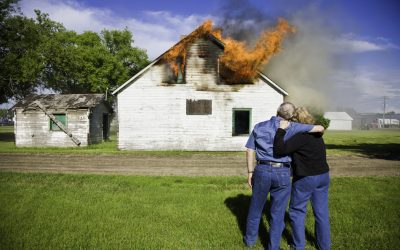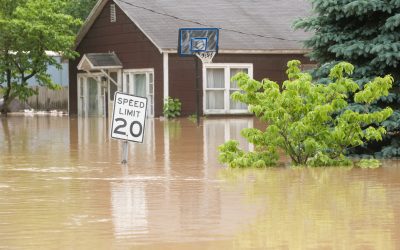Understanding the Roof Claim Process: A Step-by-Step Guide for Orlando Homeowners
Understanding the roof claim process can help you restore the damage in such a situation. You can navigate the complexities of roof insurance and gain monetary compensation to mitigate the loss. Look no further! Living in Orlando has its fair share of perks like a thriving economy, a booming job market, and exceptional recreational activities, right? But it also brings unique challenges, especially to your property’s roofing mechanism. Storm-induced winds, hurricanes, and heavy rainfall frequently show their cruel brunt on the roofing structure of properties, leading to premature damage. This article will discuss a comprehensive guide to understanding everything from damage assessment to claim settlement. So, walk through the following step-by-step guide and roof claim process the reimbursement amount from the insurer without any delay.
Get in touch with us today and get a FREE consultation
Common Causes of Roof Damage in Orlando
-
Hurricanes and Tropical Storms
When a high-category storm makes landfall in Florida and coastal regions, it tends to escalate the risk of flooding and hurricane-induced winds in Orlando. The strong winds take a toll on roofs by deteriorating shingles, roof tiles, and even the roof deck. The gutters can be ripped off from either side of the roof, leading to irreversible damage.
-
Heavy rain and flooding
Heavy rainfall penetrates through the small cracks, causing roof damage. The risk escalates when the gutters are clogged because of the debris of leaves, stumps, trunks, and branches. The water seeps into the building’s structure and causes the mold growth. As a result, the property’s wood and other materials have deteriorated.
-
Hailstorms
The roof damage caused by hailstorms differs based on factors, including wind speed, wind direction, roofing condition, the materials used in the roof, and its age. Hail triggers the red flag sign if it has caused granule loss, broken edges, bruises, punctures, and blown off the shingles.
-
Wear and tear
Often, heat, humidity, and aging roofs deteriorate the roofing shingles and other materials. If you know that your roof has crossed its age limit, keep an eye on normal wear and tear, deterioration of granules, broken edges, and bruises.
Step 1: Assessing Roof Claim Process
-
Initial Inspection
After a storm, it is vital to assess the visual signs of roof damage. Some key signs of storm-induced damage are missing shingles, leaks, sagging rooflines, dents in gutters, etc. However, remember that inspecting the roof is not safe after the assault of natural forces. You should ensure some safety measures while doing the damage assessment; otherwise, your negligence can put your life at risk.
-
Documenting the Damage
Make sure to take detailed pictures and photos from multiple angles. If necessary, capture close-up shots for a stronger claim settlement request. When it comes to comprehensive documentation, you should carefully look for external and internal damages. Hence, observe attics, light fixtures, and ceilings for water stains. When the roof’s exterior appears unaffected or undamaged, some unseen leaks may lead to further problems.
-
Hiring a Professional Roofing Contractor
It is important to contact a roofing contractor for a professional storm damage assessment. Often, the insurance adjusters overlook some severe external or internal roof damages. For them, the insurer’s interest is a priority. Conversely, professional roof inspectors discover hidden signs of damage, ensuring a fair and timely claim settlement.
Step 2: Reviewing Your Homeowner Insurance Policy
-
Understanding Your Coverage
Standard homeowner’s insurance policies cover roof damages caused by hail, storms, hurricanes, wind, and tree limbs. However, they exclude damages caused by floods and earthquakes. For their coverage benefits, you need to buy add-on policies. Understanding the policy’s coverage limits and deductibles is vital to know. It determines how much the insurance will pay for the roof damage and how much you need to pay from your pocket.
-
Exclusions and Special Clauses
Often, insurance companies deny paying reimbursement claims based on the policy’s exclusions and special clauses. Hence, know what is not covered with roof insurance. Some potential exclusions are the aging roof, pre-existing conditions, normal wear and tear, a roof made of wood material, fire damage, or earthquake damage.
-
Contacting Your Insurance Agent
It is essential to understand the nuances of the insurance policy before you buy it. Do not hesitate to ask your insurance agent the technical terms regarding inclusions and exclusions. It will help you make an informed decision and increase the chances of a favorable claim settlement in times of need.
Step 3: Filing the Roof Claim Process
-
Initiating the claim
As soon as any damage occurs to the roof, give immediate information to the insurance company. For this, visit the company’s official website or call the customer help desk. You can intimate the company via the insurance agent as well. Also, support the claim for the roof damage with photos, videos, and invoices for the temporary repairs. Provide additional information your insurance provider asks for to verify the claim.
-
Working with the Insurance Adjuster
Once you inform the insurance company, your insurer will schedule a visit at home to assess the damage. First, it is important to know that you should always be truthful with the insurance adjuster. Knowingly given false statements can cause the claim denial and legal ramifications. Whatever pictures and videos you have of the damage should be provided to the adjuster. Make sure you have evidence of external or internal damages before making temporary repairs. This will help the adjuster understand the extent of the damage.
-
Providing Documentation
Remember, comprehensive documentation (i.e., compilation of photos, videos, and professional inspection reports) helps you negotiate with the insurance company for the most favorable claim settlement. Here are some common mistakes you should know to avoid the jeopardy of the roof claim process. Avoid procrastination because later on, it becomes difficult to document the damage. To provide accurate information to the insurer, write down the details of the damage on time. Additionally, do not delay the claim to avoid red-flag signs on the insurance coverage.
Step 4: Hiring a Roofing Contractor
-
Choosing a Reliable Contractor
Working with a licensed and certified roofing contractor is crucial to achieving a massive payout for the damage restoration. Go through reviews and testimonials to learn about their experiences with previous clients. Verify their credentials to confirm their qualifications and experience.
-
Getting Estimates
Before you hire anyone, you should visit their websites or contact them on the phone to request their quotes. This will help you compare and choose the roof contractor at affordable prices. Also, consider the materials they use for repair or replacement and the warranty or insurance of the work.
-
Working with Your Contractor and Insurance
Roofing contractors often communicate with insurance companies to ensure that you get coverage for all required replacements and repairs. They review the insurance policy coverage details, including the scope of the project and estimated repair cost. Then, contractors provide insurance companies with details regarding essential repair areas, materials that will be used, and labor costs. This way, they act as intermediaries between you and the insurer.
-
Avoiding Scams
Some common roofing scams in Orlando are storm chasers, upfront payment scams, inflated repair costs, and shoddy workmanship. Therefore, do some homework before hiring a roofing contractor. Ensure they are licensed and insured.
Step 5: Repair or Replace: What’s Best for Your Roof?
-
When to Repair
Watch out for the following signs that require the roof repair:
- Small areas of damage (no sign of visible extensive damage)
- Missing shingles
- General wear and tear
- Leaky cracks
- Newer roofs post-catastrophic event
-
When to Replace
Understand the following signs to know when full roof replacement is necessary:
- Extensive structural damage
- Old age of the roof
- Roof deck damage
-
Insurance Approval for Replacement
When deciding between roof repair or full/partial replacement, insurance companies often consider various factors. The essential factors they look for are the roof age, the extent of the damage, the type of the roof, urgency, and the overall condition of the roofing mechanism. Also, insurers ensure the repair should not compromise the integrity of the roofing structure.
If you face disagreements with the insurance company regarding repair or replacement, it is advisable to contact the roofing contractor. They will help you convince the insurer, ensuring optimal repair or replacement.
Step 6: Setting the Claim and Finalizing Repairs
-
Understanding Your Settlement
Understanding the difference between actual cash value and replacement cash value can help you settle the maximum claim amount. Under the actual cash value, the insurance companies are liable to pay the cost of insured items to restore the loss. There will be a deduction on depreciation. Likewise, the replacement cash value insurance policy ensures you buy a new item to replace the damage or loss. It will not factor depreciation into your payment.
-
Deductibles and Out-of-pocket Costs
Once the claim is approved, you will be responsible for paying deductibles according to your agreement with the insurer. Also, you will pay the roofing contractor’s charges and additional living expenses, such as hotels, car rentals, and restaurant food bills.
Determine a budget for additional repairs that are not covered by the insurance company. Ensure you prefer essential repairs to cosmetic upgrades. If cosmetic upgrades are necessary, research different options, costs, and longevity to get things done at affordable prices. Also, leave room in the budget for unexpected repairs because some hidden damages may appear during the refurbishment.
-
Finalizing the Repairs
Choose a contractor who can communicate clearly to ensure timely completion of repairs. Document their messages, emails, or conversations over the phone to prevent the risk of misunderstanding. Plus, it will provide a reference in case any dispute arises. Verify the quality of work with regular inspection on the site, ensuring all repairs meet local building codes. Also, ask them to follow a proactive approach to repair minor issues before they become severe.
-
Closing the Claim
Once your roof repairs are finished, you should gather all final invoices and receipts from the contractor. Compile them in a file and submit comprehensive documentation of the repair work to the insurance company. This will help the company match your initial request for the roof repair work with the final cost.
Explore our blog about – When Is It Too Late to Hire a Public Adjuster for Your Insurance Claim?
Common Mistakes to Avoid During the Roof Claim Process
-
Not Filing the Claim Quickly
The longer you wait to file the roof damage claim, the less likely you are to avail of the coverage benefits. This is because time makes the visible signs of premature deterioration invisible.
-
Inadequate Documentation
Work with the roofing contractor to document the damage. Roofing contractors use their expertise in spotting external, internal, or hidden damages. This way, they prepare a stronger claim request.
-
Settling Too Quickly
Negotiate with the insurer for the most favorable claim settlement. Avoid accepting the first offer from the insurance provider, as the company often undervalues the damage or loss.
-
Not hiring a public adjuster when needed
Public adjusters help document the roof claim process, file the claim settlement request, and negotiate with the insurer for a fair and timely claim settlement. Hence, hire them to prevent issues such as claim denial or delayed claims.
Conclusion
Navigating the roof claim process is a challenging task. By hiring a professional roofing contractor, you can make the whole procedure much easier. They help to document loss or damage, negotiate with the insurer for adequate claim amounts, and ensure timely repair work.
Get in touch today for a FREE Consultation
Understanding the significance of a robust roof claim process structure is vital for an easy and simple lifestyle in Orlando. Always use a proactive approach and fix minor issues before they transform into bigger problems. If the assault of natural forces hits the roofing system hard, it is important to do thorough and minute documentation. Also, choose reputable roofing contractors for the roofing longevity, easy roof claim process, and warranty/insurance coverage.



